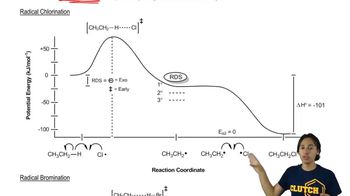How many distinct signals would you expect to see in the ¹H NMR spectrum of the following molecules? [Ignore diastereotopic hydrogens for the sake of this assessment.]
(a)




 Verified step by step guidance
Verified step by step guidance Verified video answer for a similar problem:
Verified video answer for a similar problem:


 4:35m
4:35mMaster General Assumption for 1H NMR Signals with a bite sized video explanation from Johnny
Start learning